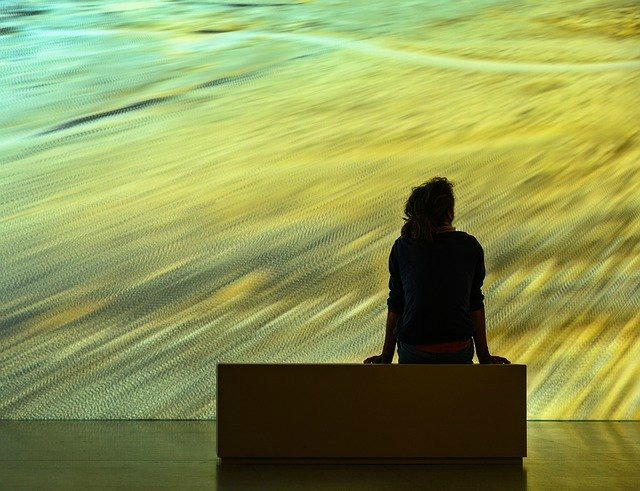
The other day I realized that one of the things that has helped me keep my commitment to being a joy-warrior is my daily practice of meditation. I’d like to share a little bit about my journey with it today.
Off and on, I’ve been practicing it now for, oh, about 50 years. I had to experiment with many different styles of meditation before I discovered what works best for me. Along the way, I found a common thread. Now I think that meditation is sort of like going to the movies.
You settle into your seat and relax, ready to let go of everything for a while. You take a nice, slow breath and let yourself focus on a blank screen in your mind as the world around you fades away. Depending on the style of meditation you’ve chosen, you project your attention to one single thing. Maybe a colored geometric shape of some kind appears on the screen. Maybe you listen to a word or phrase or prayer repeating in different rhythms and volumes. Maybe you simply feel the movement of your breath, or if you’re doing a moving meditation, the way your body feels. You hold your attention on it. And after awhile, everything, even the object of your attention, gently dissolves.
The next thing you know, you find yourself all wrapped up in the scene of some inner movie, absorbed by its drama, your emotions engaged, your mind eager to see the next turn of the plot.
Then you remember. Part of you wants to keep watching the movie, to see where it goes. But a deeper part feels the call of your intention, and you take a slow, deep breath and let the movie fade as you focus once again on your chosen object of attention.
Sometimes a whole stream of little movies will play, especially if you’re stressed. But you keep remembering and beginning again. When you’re new at this, it’s easy to misjudge sessions like this, to label them as unsuccessful in some way.
They’re not. The movies are just mind-knots untangling, smoothing out the pathways in your neural networks so that peace can flow through. They play less frequently over time and get shorter before the remembering happens. It’s a matter of training. That’s why it’s called a practice.
If you’re an active person who likes always to be doing, meditation can seem like a waste of time. But the knot-untangling it does will allow you to do whatever else you do with greater clarity, effectiveness, and ease. Meditation allows you to experience a kind of inner spaciousness, and when you reconnect with your normal outer world, you engage with it more fully, with a more centered and authentic view.
If you’re a sedentary type, meditation will provide you with new insights about yourself and give you greater freedom to think more deeply. It will awaken you to the beauty of the ordinary, and provide you with new and more creative choices about how to spend your time.
If you’re already a meditator, keep on! If you’re not, trade in 15-20 minutes of squandered time to start. (Even you have 15 minutes of squandered time, you know.) The internet is full of how-to instructions. Feel free to disregard any attached philosophies or religions if they don’t appeal to you. It’s an ancient art. It’s picked up a lot of baggage along the way. Simply pay attention to the what-to-do, not the why, of it. I’ve already given you the gist of it, but instruction can certainly help.
In our tumultuous world, it’s a practice that provides you with a refuge, a rich and beneficial retreat. It’s healing. It strengthens you. It teaches you patience and presence. And it gives you a realigned perspective, allowing you to see a broader, more accepting, more far-reaching view of things.
For me, it’s a primary means of finding the light of true joy. And despite all the fits and starts as I learned it–through practice–I am deeply grateful that it has become an integral part of my life.
Warmly,
Susan